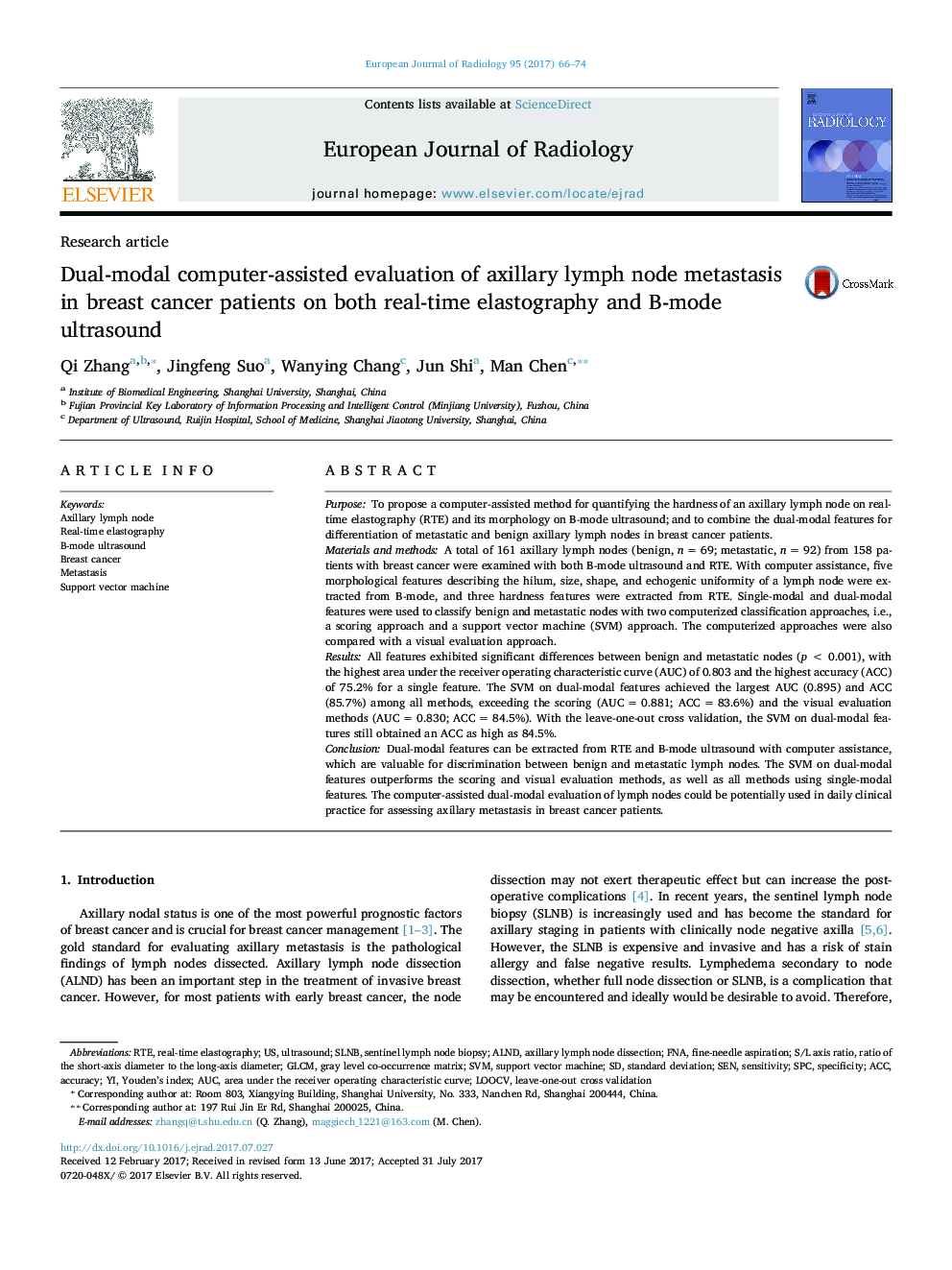| Article ID | Journal | Published Year | Pages | File Type |
|---|---|---|---|---|
| 5726032 | European Journal of Radiology | 2017 | 9 Pages |
â¢We quantify nodal morphology on B-mode US and features of lymph node hardness on RTE.â¢We combine dual-modal features for diagnosing metastatic axillary lymph nodes.â¢All 8 features exhibit significant differences between benign and metastatic nodes.â¢SVM on dual-modal features outperforms the scoring and visual evaluation methods.â¢Dual-modal evaluation is superior to single-modal evaluation.
PurposeTo propose a computer-assisted method for quantifying the hardness of an axillary lymph node on real-time elastography (RTE) and its morphology on B-mode ultrasound; and to combine the dual-modal features for differentiation of metastatic and benign axillary lymph nodes in breast cancer patients.Materials and methodsA total of 161 axillary lymph nodes (benign, n = 69; metastatic, n = 92) from 158 patients with breast cancer were examined with both B-mode ultrasound and RTE. With computer assistance, five morphological features describing the hilum, size, shape, and echogenic uniformity of a lymph node were extracted from B-mode, and three hardness features were extracted from RTE. Single-modal and dual-modal features were used to classify benign and metastatic nodes with two computerized classification approaches, i.e., a scoring approach and a support vector machine (SVM) approach. The computerized approaches were also compared with a visual evaluation approach.ResultsAll features exhibited significant differences between benign and metastatic nodes (p < 0.001), with the highest area under the receiver operating characteristic curve (AUC) of 0.803 and the highest accuracy (ACC) of 75.2% for a single feature. The SVM on dual-modal features achieved the largest AUC (0.895) and ACC (85.7%) among all methods, exceeding the scoring (AUC = 0.881; ACC = 83.6%) and the visual evaluation methods (AUC = 0.830; ACC = 84.5%). With the leave-one-out cross validation, the SVM on dual-modal features still obtained an ACC as high as 84.5%.ConclusionDual-modal features can be extracted from RTE and B-mode ultrasound with computer assistance, which are valuable for discrimination between benign and metastatic lymph nodes. The SVM on dual-modal features outperforms the scoring and visual evaluation methods, as well as all methods using single-modal features. The computer-assisted dual-modal evaluation of lymph nodes could be potentially used in daily clinical practice for assessing axillary metastasis in breast cancer patients.
